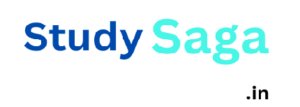IIT JAM Chemistry (cy) Details syllabus
Microeconomics
Consumer theory: Preference, utility and representation theorem, budget constraint, choice, demand (ordinary and compensated), Slutsky equation, revealed preference axioms
Theory of production and cost: Production technology, isoquants, production function with one and more inputs, returns to scale, short run and long run costs, cost curves in the short run and long run
General equilibrium and welfare: Equilibrium and efficiency under pure exchange and production, welfare economics, theorems of welfare economics
Market structure: Perfect competition, monopoly, pricing with market power, price discrimination (first, second and third), monopolistic competition and oligopoly
Game theory: Strategic form games, iterated elimination of dominated strategies, Nash equilibrium, mixed extension and mixed strategy Nash equilibrium, examples: Cournot, Bertrand duopolies, Prisoner’s dilemma
Public goods and market failure: Externalities, public goods and markets with asymmetric information (adverse selection and moral hazard)
Macroeconomics
National income accounting: Structure, key concepts, measurements, and circular flow of income – for closed and open economy, money, fiscal and foreign sector variables – concepts and measurements
Behavioural and technological functions: Consumption functions – absolute income hypothesis, life-cycle and permanent income hypothesis, random walk model of consumption, investment functions – Keynesian, money demand and supply functions, production function
Business cycles and economic models (closed economy): Business cycles-facts and features, the Classical model of the business cycle, the Keynesian model of the business cycle, simple Keynesian cross model of income and employment determination and the multiplier (in a closed economy), IS-LM Model, Hicks’ IS-LM synthesis, role of monetary and fiscal policies
Business cycles and economic models (open economy): Open economy, Mundell-Fleming model, Keynesian flexible price (aggregate demand and aggregate supply) model, role of monetary and fiscal policies
Inflation and unemployment: Inflation – theories, measurement, causes, and effects, unemployment – types, measurement, causes, and effects
Growth models: Harrod-Domar, Solow and Neo-classical growth models (AK model, Romer model and Schumpeterian growth model)
Statistics for Economics
Probability theory: Sample space and events, axioms of probability and their properties, conditional probability and Bayes’ rule, independent events, random variables and probability distributions, expectation, variance and higher order moments, functions of random variables, properties of commonly used discrete and
continuous distributions, density and distribution functions for jointly distributed random variables, mean and variance of jointly distributed random variables, covariance and correlation coefficients
Mathematical statistics: Random sampling, types of sampling, point and interval estimation, estimation of population parameters using methods of moments and maximum likelihood procedures, properties of estimators, sampling distribution, confidence intervals, central limit theorem, law of large number.
Hypothesis testing: distributions of test statistics, testing hypotheses related to population parameters, Type I and Type II errors, the power of a test, tests for comparing parameters from two samples
Correlation and regression: Correlation and types of correlation, the nature of regression analysis, method of Ordinary Least Squares (OLS), CLRM assumptions, properties of OLS, goodness of fit, variance and covariance of OLS estimator
Indian Economy
Indian economy before 1950: Transfer of tribute, deindustrialization of India
Planning and Indian development: Planning models, relation between agricultural and industrial growth, challenges faced by Indian planning
Indian economy after 1991: Balance of payments crisis in 1991, major aspects of economic reforms in India after 1991, reforms in trade and foreign investment
Banking, finance and macroeconomic policies: aspects of banking in India, CRR and SLR, financial sector reforms in India, fiscal and monetary policy, savings and investment rates in India
Inequalities in social development: India’s achievements in health, education and other social sectors, disparities between Indian States in human development
Poverty: Methodology of poverty estimation, Issues in poverty estimation in India
India’s labour market: unemployment, labour force participation rates
Mathematics for Economics
Preliminaries and functions: Set theory and number theory, elementary functions: quadratic, polynomial, power, exponential, logarithmic, functions of several variables, graphs and level curves, convex set, concavity and quasiconcavity of function, convexity and quasi-convexity of functions, sequences and series: convergence, algebraic properties and applications, complex numbers and its geometrical representation, De Moivre’s theorem and its application
Differential calculus: Limits, continuity and differentiability, mean value theorems, Taylor’s theorem, partial differentiation, gradient, chain rule, second and higher order derivatives: properties and applications, implicit function theorem, and application to comparative statics problems, homogeneous and homothetic functions: characterisations and applications
Integral calculus: Definite integrals, fundamental theorems, indefinite integrals and applications Differential equations, and difference equations: First order difference equations, first order differential equations and applications
Linear algebra: Matrix representations and elementary operations, systems of linear equations: properties of their solution, linear independence and dependence, rank, determinants, eigenvectors and eigenvalues of square matrices, symmetric matrices and quadratic forms, definiteness and semidefiniteness of quadratic forms
Optimization: Local and global optima: geometric and calculus-based characterisations, and applications, multivariate optimization, constrained optimization and method of Lagrange multiplier, second order condition
of optima, definiteness and optimality, properties of value function: envelope theorem and applications, linear programming: graphical solution, matrix formulation, duality, economic interpretation
Frequently Asked Question (FAQ'S) About IIT JAM
- What is IIT JAM Economics ?
IIT JAM Economics is a entrance test for getting admission to various iit’s and iisc’s for M.Sc. and M.Sc – P.hd. Dual degree.
- Last date to fill up online application form for IIT JAM ?
Online Application portal is closed on October 14, 2021.
- Does IIT JAM Entrance Exam conducted online or offline ?
JAM 2022 Examination will be conducted ONLINE only as a Computer Based Test (CBT) for all Test Papers.
- What are the different papers for IIT JAM for which the exam is conducted ?
JAM 2022 will have seven Test Papers, namely – Biotechnology (BT), Chemistry (CY), Economics (EN), Geology (GG), Mathematics (MA), Mathematical Statistics (MS) and Physics (PH).
- IIT JAM 2022 Exam Pattern ?
All the seven Test Papers of JAM 2022 will be of entirely objective type, with three different patterns of questions, namely (i) Multiple Choice Questions (MCQ), (ii) Multiple Select Questions (MSQ), and (iii) Numerical Answer Type (NAT) questions.
- IIT JAM 2022 Exam Date ?
Exam date for IIT JAM 2022 – February 13, 2022 (Sunday)
- IIT JAM 2022 Admit card release Date ?
Admit card for IIT JAM 2022 will be uploaded on January 04, 2022 (Tuesday)
- IIT JAM 2022 Date of Announcement of result?
IIT JAM 2022 result will be announced on March 22, 2022 (Tuesday)
- IIT JAM 2022 Organising Institute ?
IIT JAM 2022 organised by Indian Institute of Technology Roorkee, For more Do visit official website
Click here to Know more about iit jam & Download Notes Here





Pingback: Study Tips and Strategies for Success IIT JAM Economics - StudySaga.in